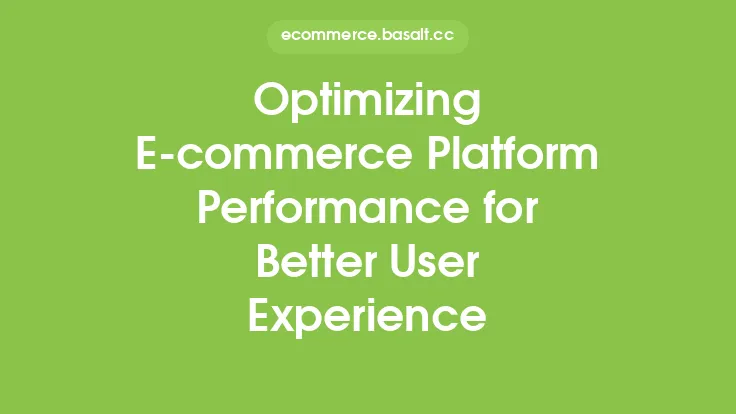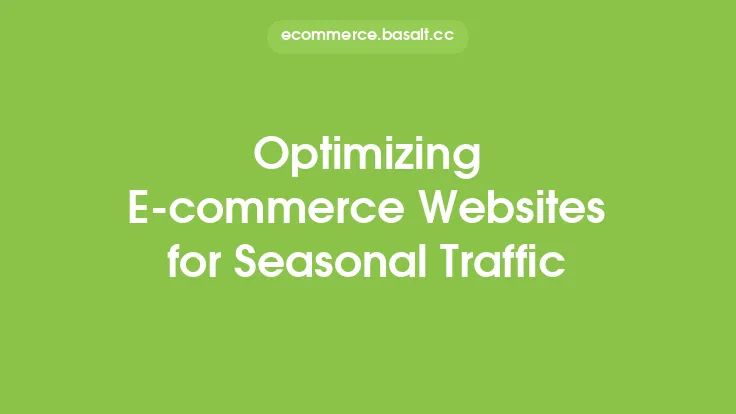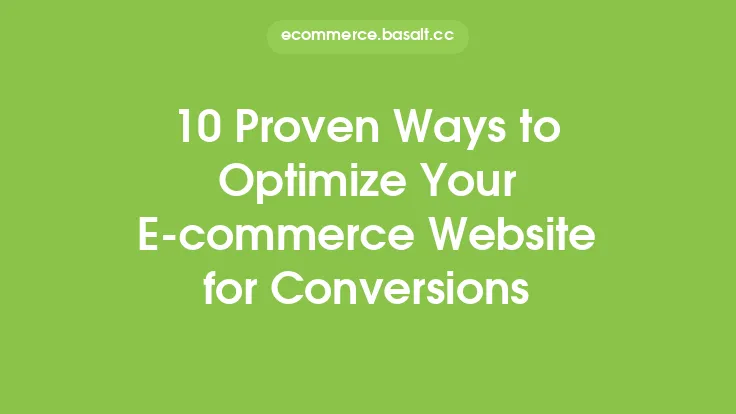When it comes to e-commerce, the navigation of a store is a crucial aspect that can make or break the user experience. A well-designed navigation system can help customers find what they're looking for quickly and easily, while a poorly designed one can lead to frustration and abandonment. In this article, we'll explore the importance of optimizing store navigation for enhanced user experience and provide tips and best practices for doing so.
Understanding the Importance of Store Navigation
Store navigation refers to the way customers move through an e-commerce website to find and purchase products. It encompasses the menus, categories, search functions, and other elements that help customers navigate the site. A good navigation system should be intuitive, easy to use, and provide a seamless experience for customers. This is important because it can impact conversion rates, customer satisfaction, and ultimately, the success of the business.
Key Principles of Effective Store Navigation
There are several key principles to keep in mind when designing a navigation system for an e-commerce store. First, it should be simple and intuitive, with clear and concise labels and minimal clutter. Second, it should be consistent, with a consistent layout and design throughout the site. Third, it should be flexible, allowing customers to navigate the site in a way that makes sense to them. Finally, it should be accessible, with features such as keyboard navigation and screen reader compatibility.
Best Practices for Store Navigation Design
So, how can you design a navigation system that meets these principles? Here are some best practices to keep in mind:
- Use a simple and consistent menu structure, with clear and concise labels.
- Use categories and subcategories to help customers narrow down their search.
- Use a search function that is easy to use and provides relevant results.
- Use breadcrumbs to help customers keep track of their location on the site.
- Use a responsive design that adapts to different screen sizes and devices.
- Test your navigation system with real customers to identify areas for improvement.
Common Navigation Patterns and Elements
There are several common navigation patterns and elements that are used in e-commerce stores. These include:
- Mega menus, which provide a large dropdown menu with multiple categories and subcategories.
- Accordion menus, which provide a compact menu that can be expanded and collapsed.
- Tabbed menus, which provide a menu with multiple tabs that can be clicked to reveal different categories.
- Carousel menus, which provide a menu with a rotating carousel of products or categories.
- Sticky menus, which provide a menu that remains fixed at the top of the page as the customer scrolls.
Mobile Navigation Considerations
With the increasing use of mobile devices for online shopping, it's essential to consider mobile navigation when designing an e-commerce store. Mobile navigation should be simple, intuitive, and easy to use on a small screen. This can be achieved by using a hamburger menu, which provides a compact menu that can be expanded and collapsed. It's also important to use a responsive design that adapts to different screen sizes and devices.
Accessibility Considerations
Accessibility is an important consideration when designing a navigation system for an e-commerce store. This includes providing features such as keyboard navigation, screen reader compatibility, and high contrast mode. It's also important to provide alternative text for images and to use clear and concise language in menus and categories.
Testing and Iteration
Finally, it's essential to test and iterate on your navigation system to ensure that it is providing the best possible experience for customers. This can be done through user testing, A/B testing, and analytics analysis. By testing and iterating on your navigation system, you can identify areas for improvement and make data-driven decisions to optimize the user experience.
Conclusion and Future Directions
In conclusion, optimizing store navigation is a crucial aspect of e-commerce that can have a significant impact on the user experience. By following the key principles of effective store navigation, using best practices for design, and considering common navigation patterns and elements, you can create a navigation system that is simple, intuitive, and easy to use. Additionally, considering mobile navigation and accessibility is essential for providing a seamless experience for all customers. By testing and iterating on your navigation system, you can ensure that it is providing the best possible experience for customers and driving business success. As e-commerce continues to evolve, it's likely that we'll see new and innovative navigation patterns and elements emerge, and it's essential to stay up-to-date with the latest trends and best practices to remain competitive.





